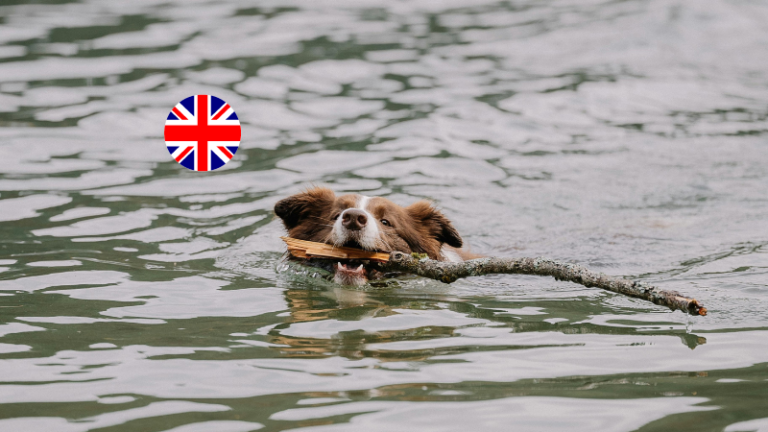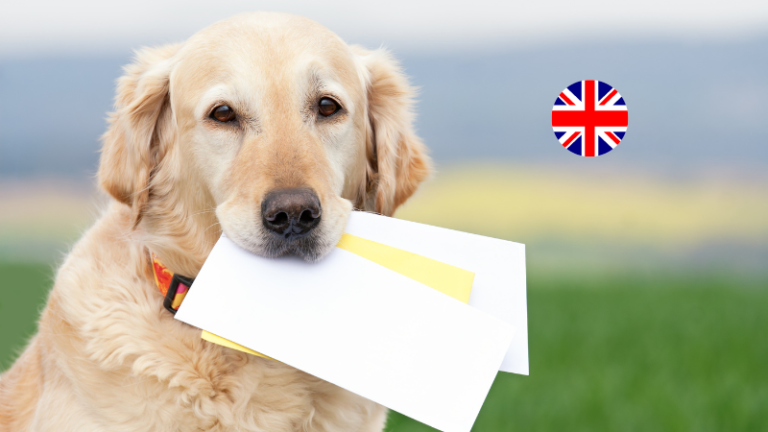
Dog Tax in Berlin
In Berlin, dog owners are required to pay a dog tax, which is a local expense tax. This tax is applied when dogs are kept for private purposes. The tax rate is 120 euros for the first dog and 180 euros for each additional dog in the household. There are exemptions available, including for guide dogs for the blind, assistance dogs for people in need, dogs from animal shelters, or dogs owned by individuals receiving certain social benefits.
Owners must register their dog with the tax office within one month of getting the dog. Any changes, such as the loss or death of the dog, must also be reported. The dog tax is set annually and is due quarterly, with the option for advance payments.
The law also mandates the exchange of information between the central dog registry and the tax office to ensure compliance with tax obligations. The dog tax law in Berlin aims to ensure a regulated taxation of dogs and contributes to public safety.

Warning About Poisoned Baits
As a pet owner, you may unfortunately discover that there are people out there who deliberately intend to harm your beloved four-legged friends. Using sneaky methods, poisoned baits are placed in popular dog areas in Berlin, which can have deadly consequences for the animals. However, as a responsible dog owner, you can take steps to minimize the risk:
Previously, the Berlin police operated a poison bait radar on Facebook, which, however, has not been updated since 2022. To stay informed, joining WhatsApp groups that share location-specific information for dog owners is a good idea. Ask other dog owners about such groups during your next walk with your dog. Often, you can quickly learn about these groups through casual conversation.
Additionally, we found a website that publishes current reports on poison baits. This site seems to provide timely information, so we recommend checking it out:
There are dog trainers in Berlin who specialize in poison bait training. Starting such training early in dog education makes sense, so your dog doesn’t find everything on the ground interesting. If you’re looking for a dog school or a trainer to help protect your dog from consuming poison baits, „Anti-Giftköder-Training“ is the right search term for you.
The signs of poisoning in a dog can vary and depend on the type of poison ingested. It’s important to act quickly if you suspect your dog has eaten a poison bait. Here are some common symptoms to look out for:
- Vomiting and diarrhea: Often the first signs, which may sometimes contain blood.
- Increased salivation: Some poisons can lead to excessive drooling.
- Tremors or seizures: Neurotoxins can cause muscle twitching, tremors, or even severe seizures.
- Lethargy or weakness: A poisoned dog may be unusually weak or have trouble standing up.
- Breathing problems: Difficulties breathing, rapid breathing, or even shortness of breath are serious symptoms.
- Changed behavior: Changes in behavior, such as aggression, fear, or confusion, can also indicate poisoning.
- Loss of coordination: Staggering or difficulty walking can indicate neurological problems.
- Excessive drinking or urination: Some poisons can affect kidney function, leading to altered drinking and urinating behavior.
- Yellowing of the skin or eyes (jaundice): A sign of liver involvement.
- Bleeding: Unusual bleeding or blood in urine/stool can occur, especially with rat poisons.
If you notice any of these symptoms in your dog, it’s crucial to visit a vet or an emergency clinic immediately. Early detection and treatment are critical for your dog’s survival chances. Provide the vet with as much information as possible about the potential poison ingestion and observed symptoms to enable quick and targeted treatment.
The veterinary chamber has provided a comprehensive list of emergency clinics, including those with 24-hour emergency services. It’s advisable to save the following link for quick access in case of a life-threatening situation for your dog:
Emergency veterinary clinics – Veterinary Chamber Berlin
Having direct access to important contact information can be crucial in an emergency and save valuable time.

Das Ordnungsamt "The Regulatory Authority"
Berlin boasts many beautiful green spaces that seem perfect for letting your dog have some fun off the leash. However, caution is needed! If these areas are not officially designated as off-leash zones, you risk being fined by the regulatory authority. Fines for violating leash laws can vary by district but may go up to 80 euros. Therefore, it’s wise to always pay attention to signs indicating an off-leash area. This way, you can ensure that you and your four-legged friend stay within legal boundaries and avoid unpleasant encounters with the regulatory authority.
Please be aware that in some cases, authorities may consider a dog on a long leash („Schleppleine“) as not being on a leash at all.

Dogs are prohibited on playgrounds

Rules for Off-Leash Areas

Dogs in Public Transportation
In the vehicles of the Berlin Public Transport Company (BVG), dogs are allowed as long as they do not endanger the safety of other passengers. Small dogs, no larger than a domestic cat, can be transported for free in buses and trains if they are in enclosed containers. Larger dogs must be leashed and muzzled, and a reduced-price ticket („ermäßigte Fahrkarte“) is required for them. Passengers with day tickets (Tagesticket) or small group day tickets can bring a dog at no additional cost. Guide dogs for the blind and assistance dogs for people with severe disabilities are always allowed to be transported, regardless of their size or whether they are in a container. The BVG reserves the right to make individual decisions on the transportation of animals to ensure the safety and well-being of all passengers. Animals are not allowed on the seats.

Dog Walking in the Forest
In addition to numerous dog playgrounds in the city, Berlin also has many beautiful forest areas where dogs can roam freely. Forest walks are not only beneficial for your four-legged friend but also provide a great opportunity for them to get extensive exercise and for you to enjoy nature.
Here are some of the most popular forest areas in Berlin where you can let your dog off the leash:
Located in the heart of the Grunewald, this area offers a variety of forest trails and diverse landscapes.
Highlights:
- Trails of varying difficulty levels
- Ideal for dogs that love to run and fetch
- Several lakes nearby
Getting there:
By car: Take the A115, exit at Wannsee, then head towards Grunewald. Parking is available at Hundekehlesee or Jagdschloss Grunewald. By public transport: Take the S-Bahn line 7 to Grunewald station.
To preserve the quality of the Grunewaldsee, it’s advisable to familiarize yourself with the local rules and regulations.
Spanning 73 hectares, it’s Berlin’s second-largest dog walking area, offering ample space for frolicking and playing.
Highlights:
- A variety of forest paths, meadows, and a small lake
- Separate areas for large and small dogs
- Easily accessible by public transport (U-Bahn line 7, Jungfernheide station)
Getting there:
By car: Take the A100, exit at Spandau, then head towards Hakenfelde/Jungfernheide. Parking is available at Forsthaus Jungfernheide. By public transport: U-Bahn line 7 to Jungfernheide station.
Spanning 40 hectares, this area by Stößensee is perfect for frolicking and swimming.
Highlights:
- Large meadow areas, partly lined with trees
- Several swimming spots for dogs
- The waterfront location keeps it pleasantly cool in the summer
Getting there:
By car: Take the A115, exit at Spandau, then head towards Gatow/Pichelswerder. Parking is available by Stößensee. By public transport: Bus 134 to Pichelswerder stop.
Located in Pankow, this area offers open meadows and forest areas for dogs to enjoy.
Highlights:
- Fenced area for puppies and small dogs
- Agility course for exercise and fun
- Quiet location, ideal for anxious dogs
Getting there:
By car: Take the B109, exit at Pankow, then head towards Arkenberge. Parking is available at Pankow-Heinersdorf S-Bahn station. By public transport: S-Bahn line 2 to Pankow-Heinersdorf station.
Overlooking Groß Glienicker Lake, this area features mixed forest and meadow landscapes.
Highlights:
- Separate areas for large and small dogs
- Opportunity for swimming in the lake
- Particularly beautiful waterfront location
Getting there:
By car: Take the A115, exit at Kladow, then head towards Groß Glienicke. Parking is available by Kladower Lake. By public transport: Bus 237 to Kladower Lake stop.
- Teufelsbruch Dog Walking Area (Köpenick)
- Müggelberge Dog Walking Area (Köpenick)
- Wuhlheide Dog Walking Area (Marzahn-Hellersdorf)
- Dahlewitz Dog Walking Area (Teltow-Fläming)
- Frohnau Dog Walking Area (Frohnau)

Visiting Cafés in Berlin with Your Dog
Those who have spent time in other large European cities outside of Berlin know to appreciate how dog-friendly our city is. It’s rare here for your beloved four-legged friend to be unwelcome.
Café Visits with Your Dog:
In Berlin, bringing your dog to a café is usually no problem. Many cafés even welcome dogs with a water bowl at the entrance.
Tips for Café Visits with Your Dog:
- Choose a café with enough space for your dog to move around.
- Make sure your dog is leashed and does not disturb other guests.
- Bring some treats to reward your dog.
- Ensure your dog has enough water.
Our Recommendations:
Never Ending Love Story (Bleibtreustr.)
A cozy café offering delicious breakfast and cake, located at Savignyplatz. Dogs are welcome and even provided with their own water bowl. Opening hours: Monday to Sunday from 8:00 AM to 5:00 PM How to get there: S-Bahn Savignyplatz
Zeit für Brot
A popular bakery with a wide selection of breads, rolls, and cakes. Dogs are also welcome here. Opening hours: Monday to Friday from 7:00 AM to 8:00 PM, Saturday from 8:00 AM to 8:00 PM, Sunday from 8:00 AM to 6:00 PM How to get there: U-Bahn Adenauerplatz (U7), Bus M19, M29
Impala Café
A hipster café with excellent coffee and cake. Dogs are welcome here. Opening hours: Monday to Friday from 7:00 AM to 9:00 PM, Saturday from 8:00 AM – 9:00 PM, and Sunday from 8:30 AM to 9:00 PM How to get there: U-Bahn Nollendorfplatz (U1, U2, U3, U4), Bus M19
More Dog-Friendly Cafés in Berlin:
- Spreegold in Bikini Berlin
- The Future Breakfast in Neukölln

Tips from Our Community for Dog Services
We’ve gathered some valuable tips for you, whether you’re looking for special offers for your four-legged friends or just curious about new discoveries for your pets.

FAQ for Dog Owners in Berlin
The Grunewald not only offers excellent walking areas for dogs but also houses the Grunewaldsee. With a surface area of around 175,000 m², the lake is the only official swimming spot for dogs in Berlin. Located on the lake’s southern shore is the historic Grunewald Hunting Lodge, near which a charming café invites visitors to linger.
The Berlin Dog Register is an official database for the registration of all dogs kept in Berlin. This measure aims at transparency in dog ownership and facilitates quick contact with dog owners, e.g., if the animal is lost. Registration includes details about the dog and its owner. It supports compliance with city regulations on dog ownership, helps reduce the number of stray dogs, and promotes the health and safety of dogs.
In Berlin, certain dog breeds and their crosses are considered „listed dogs,“ also known as dangerous dogs. This classification is based on the assumption that these breeds are potentially more dangerous than others. Regulations regarding listed dogs can change, so it’s important to inquire with the relevant authorities for the most current list. Traditionally, these lists include breeds such as:
- American Staffordshire Terrier
- Pitbull Terrier
- Staffordshire Bullterrier
- Bullterrier
For these dogs, Berlin has specific ownership regulations, such as leash and muzzle requirements in public, a mandatory liability insurance, and in some cases, a permit requirement for ownership. The goal of these measures is to ensure public safety and minimize risks posed by these dogs considered potentially dangerous.
Failing to immediately remove your dog’s droppings from public pathways or green spaces is considered a public offense. For this infraction, local regulatory authorities can impose a warning fine of 35 euros. In certain cases or for repeated offenses, even higher fines may be demanded. It’s important to be aware of your responsibilities as a dog owner and contribute to cleanliness and hygiene in public spaces.
Although a dog handling license is not yet mandatory in Berlin, it offers an attractive option for dog owners. By voluntarily passing this test, one can be exempted from the general leash law that has been in effect since January 1, 2019. This means you are allowed to walk your dog off-leash in the Berlin city area, provided you can demonstrate proficiency. This proficiency is certified by the dog handling license. For long-term dog owners, there is also the option to apply for a proficiency certificate without having to take the test.








